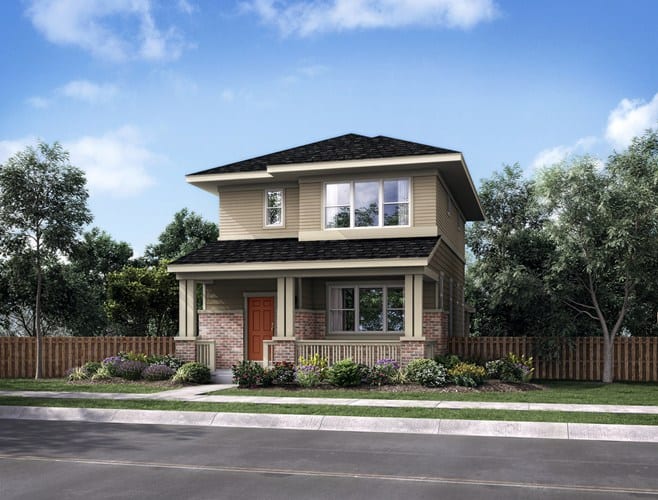
Environmental consciousness is about much more than recycling plastics and paper. Just ask the homebuilding industry.
The homebuilding industry has made many strides to decrease our impact on the earth and, as such, many national programs have been created to guide, rate and reward eco-friendly building while smaller programs focus on reducing energy and water use in the home. But it’s not just the planet that benefits.
“These programs are important to homebuyers for several reasons,” explains Steve Wright, Vice President of Information Services at Whirlwind Steel Buildings, Inc. “First, and probably foremost, is the fact these programs put money in your pocket and second, improve your quality of life.”
LEED for Homes
LEED (Leadership in Energy and Environmental Design) for Homes measures how green a home is based on a checklist of criteria that includes analysis of the lot, all materials, energy efficiency, water efficiency and the design process. When a builder follows the program’s guidelines, it results in lower annual energy costs for a family living in the home, as well as reduced water leakage and higher home values.
LEED certification applies to the full scope of residences: mass-production homes, custom homes, stand-alone single-family homes, duplexes and townhouses, suburban and urban apartments and condominiums and lofts in historic buildings and affordable housing.
Tom Lozano, former Senior Vice President of Air Scrubber Plus, believes LEED has become popular because “consumers are interested in saving money, conserving energy, reducing water consumption, improving indoor air quality and making better building material choices.”
Energy Star Certified New Homes
Energy Star is a comprehensive program that benefits from the combined resources and oversight of the U.S. Environmental Protection Agency and the U.S. Department of Energy. Products like dishwashers can receive a high Energy Star rating if they are good at conserving water and energy, for example. Roofs, water heaters, insulation HVAC, stoves and more are included among the products that qualify for an Energy Star rating.
Beyond that, you can build a whole home that is an Energy Star Certified New Home. Before a new home can be given this certification, it must undergo a series of inspections, testing and verifications to ensure that it uses 15 percent to 30 percent less energy than typical new homes.
In order to meet this requirement, Energy Star Certified New Homes include a complete thermal enclosure system for proper insulation, a complete heating and cooling system for better indoor air quality and more comfort, a complete water management system for the prevention of water damage and moisture problems and energy-efficient lighting and appliances.
Home Energy Rating Standard (HERS) Index
When meeting with homebuilders, you’ll find that many will let you know of the HERS (Home Energy Rating Standard) Index score, a nationally recognized system for determining a home’s energy performance. The rating system was developed by Residential Energy Services Network (RESNET).
Here’s how it works: the lower the score, the more energy efficient the home. A home that scores 130 is 30 percent less energy efficient than a new home, according to RESNET. A home that has a HERS score of 70, on the other hand, can see an annual savings of $1,078 in energy costs.
U.S. Department of Energy Builders’ Challenge
In 2008, the Department of Energy challenged the homebuilding industry to build more high-performance homes that would achieve a 70 or better on the EnergySmart Home Scale (E-Scale).
Because homes with a 70 or better are at least 30 percent more efficient than a typical new home, they are appealing to homeowners looking for a cleaner home environment that is less costly to maintain. The E-Scale also makes it easy for homebuyers to compare the energy performance of one home to another.
WaterSense
While many of the programs outlined here address multiple aspects of the home, the Environmental Protection Agency’s WaterSense program was designed specifically to protect the future of our water supply. Products such as landscape irrigation controllers, toilets, showers and faucets can all earn the WaterSense label based on how much they can reduce water usage.
Though there are many different green building programs out there, all are meant to work in conjunction with each other to produce the most efficient home for homebuyers without sacrificing quality. As you embark on your homebuilding journey, be sure to talk to your builder about how implementing some (or all) of the above-mentioned practices will save energy and money for a more comfortable home.

Sarah Kinbar is a writer and editor with a passion for design and images. She was the editor of Garden Design magazine, curating coverage of residential gardens around the globe. As the editor of American Photo, Kinbar worked with photographers of every genre to create a magazine that told the story of the photographer’s journey.
She has been writing about architecture, landscape design and new-home construction for NewHomeSource since 2012. During that time, she founded Kinship Design Marketing, a boutique agency that provides content for website redesigns, blogs, inbound marketing campaigns and eNewsletters.

